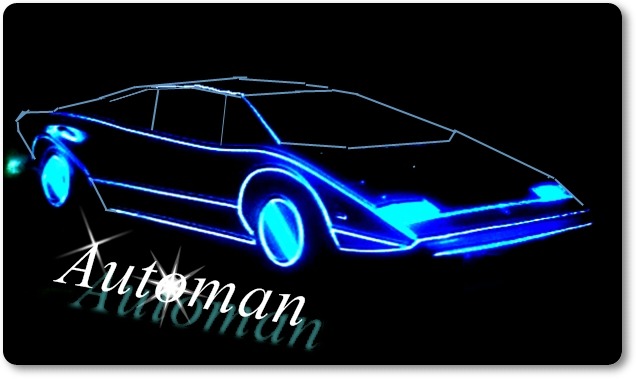These ambitious network experiments crashed harder than Windows 95, but taught lessons that saved modern streaming hits.
Network television in the 1980s treated sci-fi like that experimental dish you order once—intriguing concept, messy execution, and you’re not ordering it again. Studios kept throwing money at increasingly bizarre concepts during an era when Miami Vice proved audiences craved visual excess. Most crashed harder than a Windows 95 system running Crysis, leaving behind lessons that modern hits like Stranger Things and The Mandalorian learned the hard way.
These forgotten experiments tell us more about creative ambition than their successful counterparts ever could. Each failure cleared the runway for today’s streaming successes, teaching harsh lessons about budget management, audience expectations, and the delicate balance between innovation and accessibility. Time to dig through television’s digital graveyard and see what killed these shows before streaming could save them.
8. Misfits of Science (1985-1986): X-Men on Food Stamps

Before Courteney Cox could say, “Could this BE any more canceled?”, she was part of NBC’s bargain-basement superhero team featuring characters with powers that looked impressive on paper. Johnny B possessed super-speed, Gloria could shrink to tiny sizes, and Dr. Hayes wielded telekinetic abilities—essentially the X-Men if Professor Xavier shopped exclusively at thrift stores. The show attempted to blend superhero action with romantic comedy, creating tonal whiplash that confused audiences and executives alike.
NBC pushed for more romance and laughs during production meetings, where the effects department was already struggling to make powers look convincing on a shoestring budget. Despite featuring surprisingly progressive female characters and genuine attempts at social commentary, the series lasted just one season. Modern superhero productions learned to commit fully to their chosen tone rather than attempting to please multiple demographics simultaneously.
7. The Phoenix (1982): Five Episodes of Identity Crisis

Spiritual enlightenment collided with network television expectations when Judson Scott’s Bennu awakened in modern times carrying ancient astronaut wisdom and telekinetic powers. The series couldn’t decide whether it wanted to explore cosmic consciousness or deliver standard fugitive drama with mystical seasoning sprinkled on top. One episode would find Bennu contemplating universal truths, the next featured him running from generic government agents in sequences that looked suspiciously like A-Team outtakes.
ABC executives never figured out how to market philosophical action figures to prime-time audiences. The tonal inconsistency gave viewers motion sickness as they tried to follow a character who switched between enlightened sage and action hero without warning. Four aired episodes plus an unaired pilot later, the network decided the experiment had failed. Spiritual television and network television proved fundamentally incompatible when executives demanded action beats over character development.
6. Captain Power and the Soldiers of the Future (1987-1988): When Toys Drive the Plot

Interactive entertainment arrived ahead of its time when this post-apocalyptic series became television’s first toy-synchronized experience. Viewers could use light-sensing weapons to “shoot” at screen targets during specially designed sequences, scoring points as humans battled machines in a dystopian future. J. Michael Straczynski’s creative team envisioned serious stories about survival and humanity’s relationship with technology.
Mattel’s funding came with strings attached—specifically, the need to sell toys drove narrative decisions more than storytelling logic. The tension between artistic vision and commercial requirements created a show that couldn’t decide whether it was telling stories or demonstrating product features. Production values remained impressive throughout the single-season run, featuring ambitious storytelling that pushed boundaries for children’s programming. Marketing departments had successfully wrestled creative control away from storytellers, establishing a template that continues influencing entertainment today.
5. Otherworld (1985): Ambition Overload

Conceptual brilliance became the Sterling family’s ticket to television obscurity when they accidentally passed through a portal into an alternate Earth divided into distinct provinces. Each episode explored different social structures and political systems, using sci-fi premises to examine everything from gender roles to authoritarianism. The constant reinvention that made the show intellectually fascinating also became its commercial downfall.
Viewers never got comfortable with any setting before the narrative transported them somewhere completely different the following week. Elaborate worldbuilding required new sets, costumes, and rebuilding the entire show every seven days. CBS watched its budget disappear faster than a politician’s campaign promises. Eight episodes of increasingly complex storytelling and declining ratings later, CBS discovered that intellectual ambition alone couldn’t sustain prime-time television when audiences craved familiarity alongside innovation.
4. Probe (1988): Too Smart for Network Television

Scientific method met detective work when Parker Stevenson’s Austin James solved high-tech mysteries through actual intellectual rigor rather than car chases and explosions. Created with input from Isaac Asimov himself, the series emphasized complex puzzles that required viewers to think alongside the protagonist. ABC executives immediately grew nervous about audience comprehension, pushing creators toward more action and romantic subplots.
The network’s interference watered down Asimov’s vision until it satisfied neither the legendary author nor the executives demanding changes. Cases became progressively less interesting as the show attempted to become more “accessible” to imaginary viewers who apparently couldn’t handle intelligent storytelling. Seven episodes later, Probe joined the cancellation graveyard. Networks consistently underestimated their audiences, while streaming services would later succeed by embracing niche demographics over broad appeal.
3. Manimal (1983): Shape-Shifting Into Budget Hell

Budget constraints turned what should have been television’s wildest concept into its most frustrating limitation. Simon MacCorkindale starred as Dr. Jonathan Chase, a man theoretically capable of transforming into any animal. Reality meant viewers got the same hawk-or-panther routine twice per episode because those were the only transformations NBC could afford.
Stan Winston’s transformation sequences delivered legitimately incredible practical effects that devoured production time and money like a hungry beast. Everything else suffered as a result, creating television’s equivalent of buying a Ferrari for grocery store runs because you can’t afford gas. Eight episodes of Chase solving generic crimes through predictable animal changes sent viewers hunting for better entertainment. Even groundbreaking special effects couldn’t compensate for storytelling that felt repetitive and constrained by its technical limitations.
2. Automan (1983-1984): Digital Superman Meets Reality Check

Tron collided with Knight Rider when Glen A. Larson decided lightning could strike twice with this glowing blue superhero. Fresh off Knight Rider’s success, Larson created a crime fighter who materialized from computer code through nerdy programmer Walter Nebicher. Chuck Wagner donned the digital costume to battle real-world villains in what seemed like science fiction’s answer to primetime action.
Every episode burned through money faster than crypto during a bear market. The special effects were genuinely impressive for 1983, featuring a Lamborghini Countach making impossible 90-degree turns in pure automotive poetry wrapped in neon nonsense. ABC executives watched their budget evaporate as quickly as the show’s ratings declined. Twelve episodes later, the network made the inevitable decision—flashy tech alone couldn’t sustain an audience when scripts felt thinner than the show’s digital effects.
1. Voyagers! (1982-1983): History Class With Explosions

Educational television got an action-adventure makeover when Jon-Erik Hexum starred as Phineas Bogg, a time traveler fixing historical mistakes alongside young companion Jeffrey Jones using a pocket watch called the Omni. The show’s noble ambitions involved teaching kids history through adventure and carefully choreographed explosions. Unfortunately, the history lessons felt about as natural as your algebra teacher attempting stand-up comedy between equations.
Time travel logic remained inconsistent throughout the series, creating plot holes large enough to drive the TARDIS through sideways. Educational content arrived as forced lecturing between action sequences, satisfying neither entertainment nor academic goals. NBC wanted both thrills and learning outcomes from a single program. Twenty episodes later, Quantum Leap would perfect this formula by prioritizing emotional storytelling over historical accuracy.






























